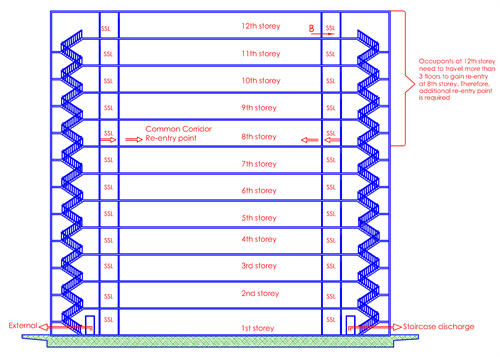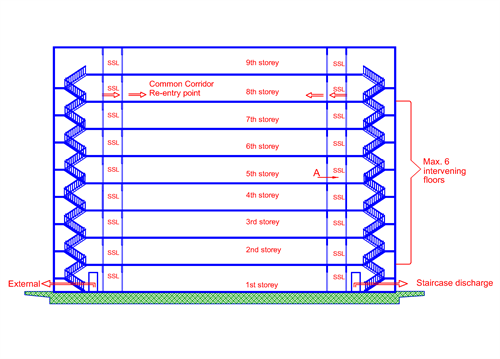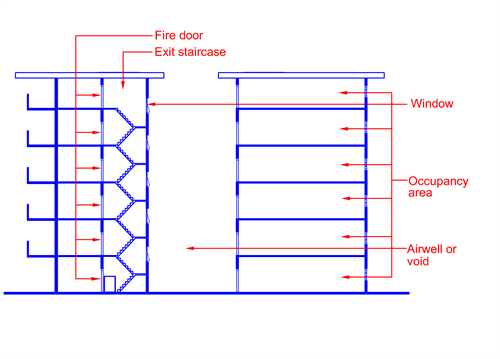Ensuring Fire Safety in Buildings: Essential Guidelines and Practices
Fire safety in buildings is a critical aspect of ensuring the protection of life and property. With the potential for devastating consequences, it’s imperative that buildings are equipped with the necessary measures to prevent fires, detect them early, and facilitate safe evacuation in case of emergencies. Here, we’ll explore essential guidelines and practices to enhance fire safety in buildings.
Importance of Fire Safety:
Fires pose significant risks to both occupants and structures within buildings. The rapid spread of flames, smoke inhalation, and structural damage can lead to injuries, fatalities, and extensive property loss. Therefore, prioritizing fire safety measures is not just a legal requirement but also a moral obligation for building owners, managers, and occupants.

Essential Fire Safety Measures:
- Installation of Fire Detection and Alarm Systems:
- Deploy smoke detectors, heat detectors, and fire alarms strategically throughout the building.
- Ensure regular maintenance and testing of these systems to guarantee their functionality.
- Proper Fire Extinguishing Equipment:
- Equip buildings with fire extinguishers, fire blankets, and hose reels at accessible locations.
- Conduct training sessions for occupants to educate them on how to safely operate fire extinguishing equipment.
- Clear Emergency Exit Routes:
- Maintain unobstructed pathways to emergency exits and ensure they are clearly marked with illuminated exit signs.
- Conduct regular drills to familiarize occupants with evacuation procedures.
- Effective Fire Suppression Systems:
- Install automatic sprinkler systems in accordance with building codes and regulations.
- Consider incorporating advanced suppression technologies such as gas-based extinguishing systems for specific hazards.
- Building Construction and Materials:
- Utilize fire-resistant building materials and employ construction techniques that impede the spread of flames and smoke.
- Implement compartmentalization strategies to contain fires within designated areas.
- Electrical Safety Measures:
- Conduct routine inspections of electrical systems to identify and address potential hazards.
- Avoid overloading circuits and ensure proper insulation and grounding of electrical wiring.
- Smoking Policies:
- Establish designated smoking areas with proper disposal facilities away from the building to mitigate the risk of accidental fires.
- Enforce strict no-smoking policies in high-risk areas such as storage facilities and chemical laboratories.
- Emergency Lighting and Communication Systems:
- Install backup power sources for emergency lighting to ensure visibility during evacuations.
- Implement communication systems, such as intercoms or public address systems, to relay instructions to occupants during emergencies.
Regulatory Compliance and Professional Assistance:
Adhering to local building codes, fire safety regulations, and standards is paramount in ensuring compliance and minimizing liabilities. Building owners should engage qualified fire safety professionals to assess risks, develop comprehensive fire safety plans, and oversee the implementation of necessary measures. Additionally, regular inspections by fire authorities and certification of compliance further reinforce the commitment to fire safety.







